Hollywood film brings Vietnamese cuisine to global audiences
The appeal of Vietnamese cuisine is reaching a broader global audience thanks to the Netflix film "A Tourist's Guide to Love," which showcases many of the nation’s signature dishes.
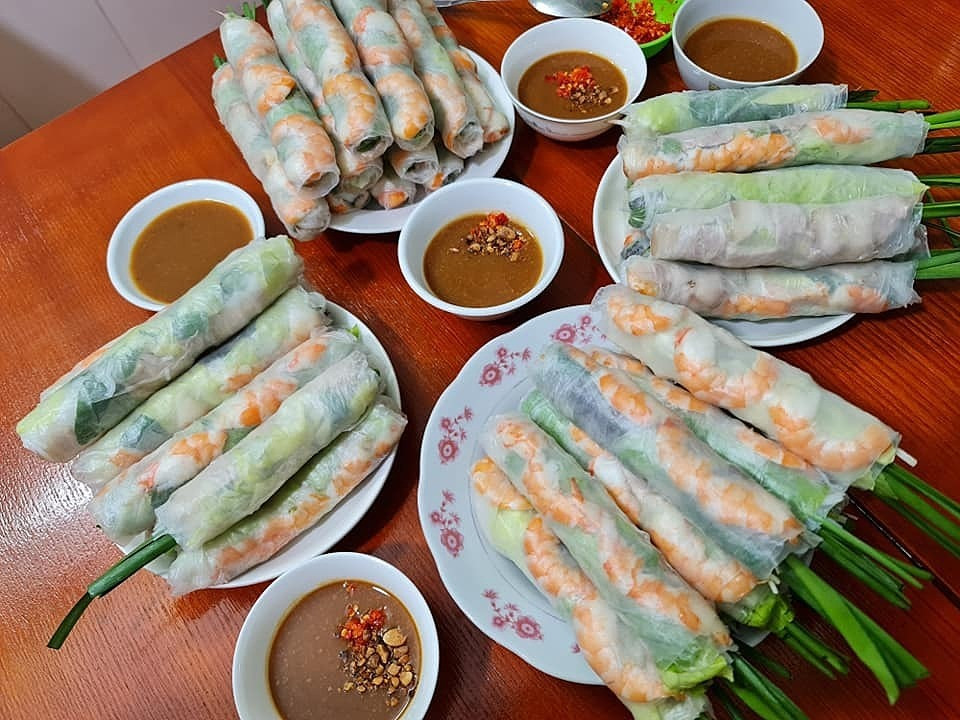
In the film, which stared streaming on Netflix April 21, the popular Vietnamese street food goi cuon (spring rolls with pork and shrimp) appears in a scene filmed at Ben Thanh Market in downtown Ho Chi Minh City.
The rolls consist of a rice paper wrap stuffed with rice vermicelli noodles, sliced pork, steamed prawns and a salad of fresh aromatic leaves including mint, cilantro, sliced cucumbers and basil.
The red shrimp and green vegetables give the dish its signature colorful look underneath the translucent rice paper. The dish is served with a thick dark brown peanut dipping sauce.
Goi cuon spring rolls cost VND10,000 to VND15,000 each on average.
Photo by Hoang Thien
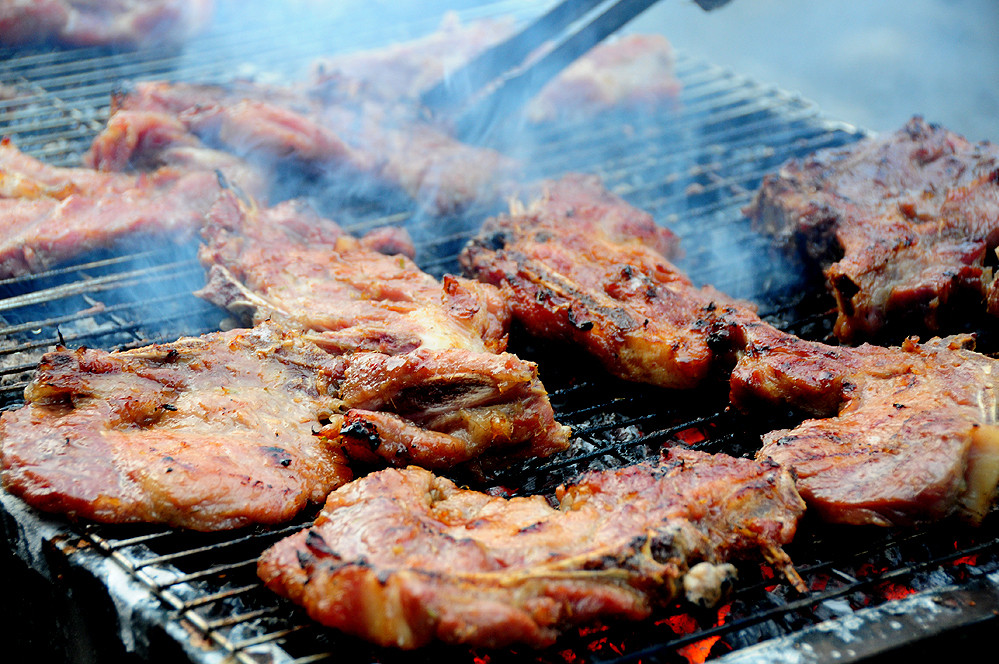
A scene in which fresh pork ribs are grilled over charcoal at Ben Thanh Market has also attracted the attention of international viewers.
Grilled pork chops are an indispensable part of com tam (broken rice), a streetside dish that can be found almost everywhere in Ho Chi Minh City and the rest of southern Vietnam, from traditional markets to street carts.
The grilled pork is served with bi (shredded pork skin), cha (meatloaf with steamed pork, egg and other ingredients), a bed of pickled vegetables and a garnish of scallion oil and crispy fried pork lard.
A serving of broken rice costs VND25,000 to 40,000 ($1-1.61), although some elite destinations charge VND120,000 a portion.
Photo by Mr. True

Banh bot loc (steamed tapioca cake with shrimp), which originated in the former imperial city of Hue, also appears in the movie.
Banh bot loc is a chewy dumpling made from tapioca flour filled with pork and shrimp. The cake is covered in banana leaves and steamed before being served hot with fish sauce.
Near the western gate of Ben Thanh Market is a stall selling the cake together with other Hue’s specialties such as banh beo (steamed rice cake) and banh it tran (sticky rice dumpling).
These dishes usually come with dry shrimp paste, small pieces of fried bread and a piece of Vietnamese pork sausage. Everything is eaten with fish sauce, which comes mixed with chopped spicy chilies on the side in a small dipping saucer.
Cake prices start at VND20,000 and go up from there.
Photo by Ngan Duong
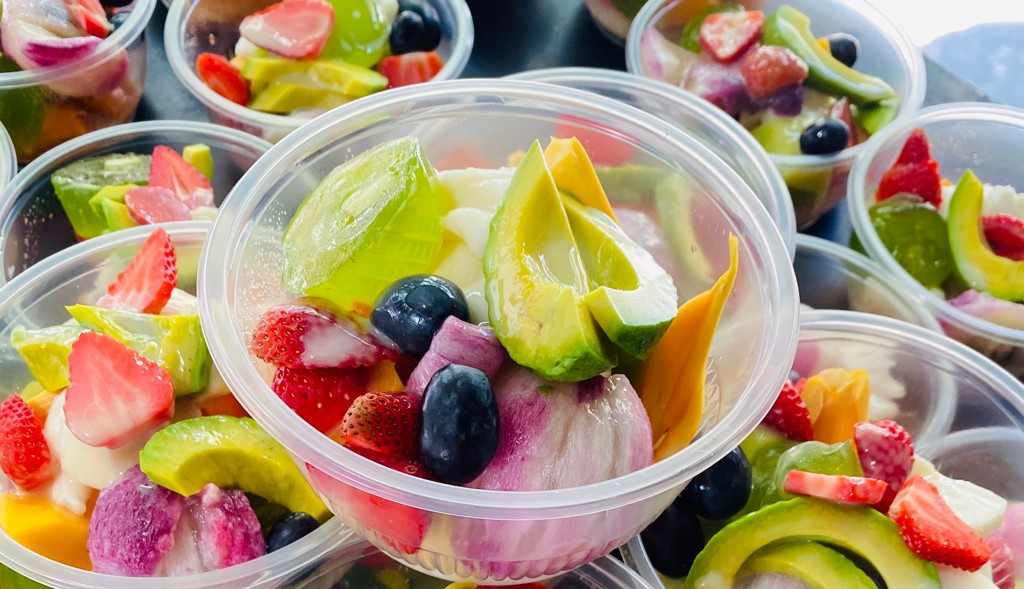
Another Ben Thanh Market scene in "A Tourist’s Guide to Love" features Vietnamese fruit and yogurt, a popular local dessert mixture.
With temperatures soaring to 40 degrees Celsius in Ho Chi Minh City recently, the dish has become an increasingly popular way to cool off during these hot summer months.
Most yogurt eateries feature tropical fruits such as avocado, dragon fruit, watermelon, jackfruit, strawberry, mango and grape mixed with coconut milk, sweetened condensed milk, Vietnamese yogurt and ground ice.
A serving of Vietnamese fruit mixed with yogurt costs VND35,000-50,000 on average.
Photo by Thien Minh
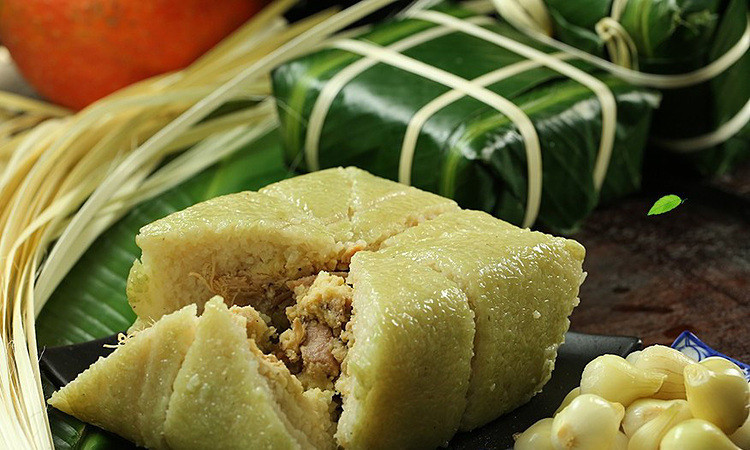
Foreign film viewers have also been impressed by traditional Vietnamese customs and foods after watching "A Tourist's Guide to Love" as the movie features scenes of rural Vietnamese families celebrating Tet (Lunar New Year Festival), the country’s biggest and most important holiday.
In the north, the weather usually gets chilly and slightly rainy during Tet, and traditional meals consist of dishes made from starch, vegetables and meats.
Banh chung, a square-shaped patty of sticky rice filled with meat and beans, is wrapped in green leaves. The savory “cake” is an indispensable part of the Tet ambiance in the homes of northern families.
Squares of banh chung are made of a glutinous rice cake filled with mung bean, fatty pork, pepper and salt. Before cooking, the square is wrapped in dong leaf, a popular edible plant found throughout Asia, which gives it an eye-catching green color.
Banh chung’s origins have been traced back to the legend of a prince who created the square cake to represent the land people live on. Eating the cake during the New Year holiday is an old and well-preserved tradition.
Photo by Thuy Quynh
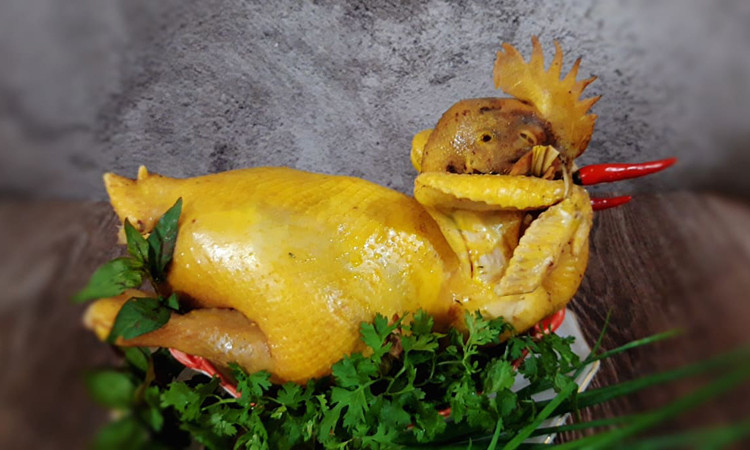
Boiled chicken is also an essential part of most Tet meals. Some believe the dish represents a lucky start for a family’s new year.
The chickens used to make the dish are native breeds. After cleaning, the whole chicken is boiled in a large pot until the flesh is fully cooked and the skin turns a bright yellow color. The cook then lets the meat dry and harden before chopping it into pieces. The chicken pieces are then arranged to cover a round or oval dish.
A special ingredient in this dish is lime leaf. The leaves need to be sliced into super slim strands and placed on top of the chicken to add a special aroma to the meat. The chicken is only complete, however, with a dipping sauce made of pepper, salt, lime juice, and lime leaves.
Photo by Bui Thuy

Nem ran (fried spring rolls) are a sure-fire part of Tet meals in northern homes. They’re filled with a harmonious mixture of fatty pork, onion, Jew’s ear mushroom, vermicelli, egg, pepper, carrot, and bean sprout, all chopped and mixed with spices.
The mixture is rolled snuggly in thin, white rice paper.
The fried rolls are served with fish sauce flavored by lime juice, sugar, garlic, and chili.
Photo by Bui Thuy
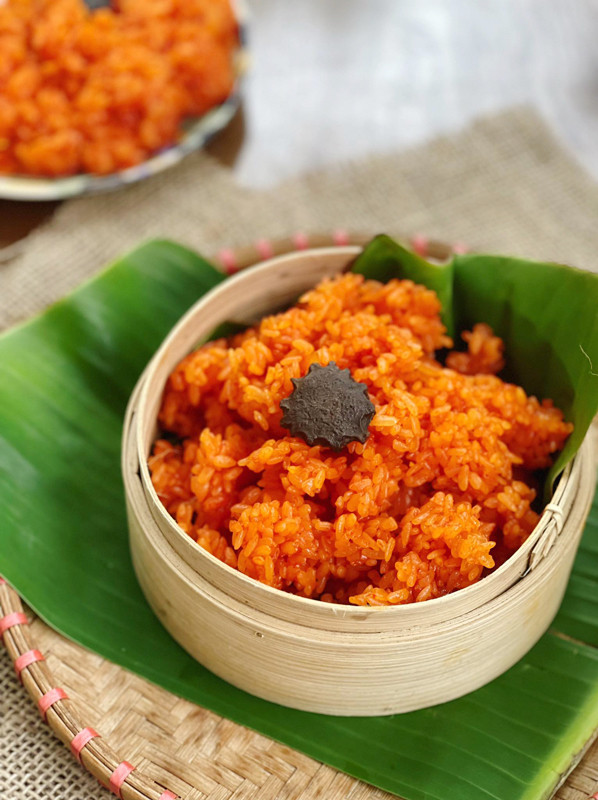
Like boiled chicken and fried spring rolls, xoi gac (Vietnamese red sticky rice) is a regular part of traditional meals for Tet in northern Vietnam, where locals believe the dish brings prosperity and good fortune.
This traditional Vietnamese treat combines sticky rice and gac, a type of perennial melon grown throughout several Southeast Asian countries.
A purée of the fruit is mixed with rice before the combo is steamed with coconut milk and sugar.
Xoi gac is characterized by its unusual red hue, which is one of the reasons the dish is usually served on special occasions, including the Lunar New Year Festival.
Photo by Bui Thuy






